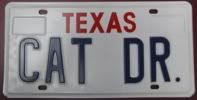12v Safety Question
10 posts
• Page 1 of 1
12v Safety Question
Does anyone enclose their 12v wire connections inside plastic/metal boxes or is it safe to use only wire nuts. I will be mounting some 12v reading lights and a 12v receptacle on a wall that has rigid foam behind it. I feel a bit uneasy leaving wiring floating among flammable material. Is it safe to do that with 12v?
- MG
- Teardrop Inspector
- Posts: 5
- Joined: Fri Apr 17, 2009 12:11 pm
- Location: Portland, OR
I didn't use wire nuts anywhere as I don't really trust them in a TD that is going to get its fair share of road vibrations. I elected to use quality "crimp" style connectors using a good quality crimping tool. Then the whole connector got a couple coats of liquid electrical tape. I have read on the forum where some guys elect to solder every connection to avoid possible connection failures and the resulting problems. Just my own two cents.
Mike
Mike
-

Toytaco2 - 500 Club
- Posts: 540
- Images: 368
- Joined: Mon Dec 10, 2007 1:57 pm
- Location: Oklahoma City, OK


 Mark (& Cindi)
Mark (& Cindi) 



